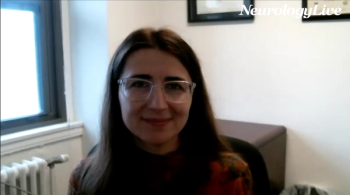
Early Relapsing-Remitting MS: Induction vs Escalation
Hot Topics session at ECTRIMS 2016: treat early active RRMS with potent induction therapy or immunomodulation then escalation? Where do you stand?
The best treatment approach for early active relapsing-remitting multiple sclerosis (RRMS) was debated during a
In Favor of Induction Therapy
Currently available immunosuppressants present possible serious side effects, but for patients with active and aggressive disease, the risk of the disease causing early disability outweighs the risk of immunosuppressants. The strategy of induction therapy is to use immunosuppressants only long enough to control disease activity. Then, the patient can be switched to a more easily tolerated drug.
Mitoxantrone followed by maintenance therapy achieved better results than monotherapy with an interferon beta. A five-day course of IV alemtuzumab provided long-term benefits to early relapsing patients. Also, natalizumab was found to be effective, but tended to result in rebound inflammatory disease activity during withdrawl.
Opposition to Induction Therapy
Although newer treatment strategies can alter or suppress the immune response more dramatically than platform therapies, they can also cause infections, some of which could be fatal. Long-term safety of immunosuppressants has not yet been well studied and only a few of the highly effective, newer therapies change the immune response in a way that would provide hope for prolonged disease remission. Carefully designed trials of induction therapy are recommended before suggesting this treatment approach to most patients early in the disease course.
Efficacy of Cladribine After Clinically Definite MS
The CLARITY study showed that patients with active MS had reduced annual relapse rates and less disability worsening when treated with cladribine annually for two years in short duration courses compared to placebo. In the ORACLE-MS study, patients with a first demyelinating event treated with cladribine had a significantly reduced risk of converting to clinically definite MS than those treated with placebo. If clinically definite MS occurred during the initial treatment period, patients were treated with subcutaneous interferon-beta 1a (titrated over 4 weeks up to the dose of 44 mcg) three times per week during an open-label maintenance period (OLMP).
Prof. Giancarlo Comi, et al. (University Vita-Salute San Raffaele, Milan, Italy) assessed the annual relapse rate during ORACLE-MS OLMP.
One hundred nine patients converted to clinically definite MS and received at least one dose of interferon-beta 1a. The median time on interferon-beta 1a was 56.0 weeks. The estimated annualized relapse rates were 0.14 for patients (n=25) originally treated with cladribine 3.5 mg/kg, 0.24 for patients (n=24) treated with 5.25 mg/kg, and 0.42 for patients (n=60) treated with placebo.
Patients treated with cladribine who converted to clinically definite MS and were switched to interferon-beta 1a experienced a significant treatment effect compared to patients on placebo. These patients also had lower annualized relapse rates during the OLMP compared to the placebo group.
Newsletter
Keep your finger on the pulse of neurology—subscribe to NeurologyLive for expert interviews, new data, and breakthrough treatment updates.




































